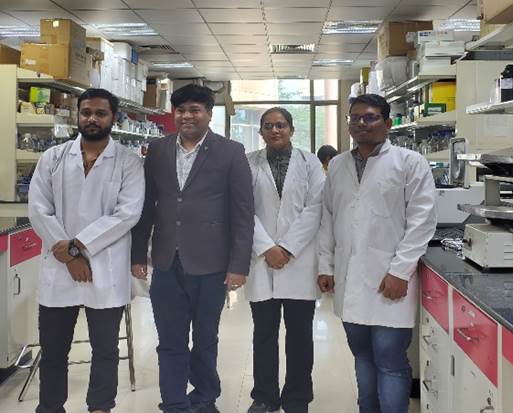A recent study has revealed that reducing nitric oxide (NO) levels in plants can significantly enhance nitrogen uptake and Nitrogen Use Efficiency (NUE) in crops like rice and Arabidopsis. This breakthrough offers a promising pathway for more sustainable agricultural practices and encourages further research into reducing NO levels in plants to improve NUE.
Current Challenges in Improving NUE
Existing technologies aimed at improving NUE mainly focus on agronomic practices, such as:
- Application of inorganic nitrogen fertilizers in split doses
- Slow-release nitrogen fertilizers
However, these methods have several drawbacks:
- Increased operational costs for farmers
- Environmental harm due to the emission of excess Nitrogen oxides (NOx)
- Contribution to global greenhouse gas emissions during fertilizer manufacturing
Given these challenges, there is a growing need for alternative methods to improve NUE while addressing global concerns related to food security and environmental sustainability.
Study by the National Institute of Plant Genome Research (NIPGR)
Researchers at NIPGR have demonstrated that modulating NO levels can improve NUE at a systemic level. Specifically, NO regulates nitrate transporters, particularly the high-affinity transporters (HATs), which play a critical role in nitrogen uptake. This study suggests that pharmacological and genetic manipulation of NO levels could lead to improved yields with reduced nitrogen application, even in conditions of low nitrogen availability.
Methodology: Pharmacological and Genetic Manipulation
The research team, led by Dr. Jagannath Swain, Dr. Jagadis Gupta Kapuganti, Dr. Nidhi Yadav, and Dr. Sanjib Bal Samant, implemented a pharmaceutical approach to manipulate NO levels in wild-type (WT) plants. The plants were treated with:
- NO donor (SNAP)
- NO scavenger (cPTIO)
The team monitored the NUE by assessing shoot nitrogen levels, amino acid content, and overall plant growth.
Key Findings: Overexpression of Phytoglobin
One of the key findings of the study was the overexpression of phytoglobin, a natural NO scavenger. This led to an increase in the expression of high-affinity nitrate transporters (HATs), such as NRT2.1 and NRT2.4, which enhanced nitrogen uptake, particularly under low NO conditions.
Sustainable Approach to Boost Crop Yield
This innovative approach offers a sustainable alternative to traditional fertilizers, which are costly and environmentally harmful. By genetically and pharmacologically modulating NO levels, the researchers have created a method to regulate HATs and improve crop yield with reduced nitrogen inputs.
Role of Nitric Oxide in Nitrogen Uptake
When nitrogen levels are low, plants activate high-affinity nitrate transporters. This process is dynamically regulated by nitric oxide. The nitrosylation of proteins, triggered by NO, plays a crucial role in enhancing NUE. Genetic and pharmacological interventions that modify NO levels have shown to improve plant growth and nitrogen utilization.
Support and Future Directions
The research is supported by the ANRF (formerly SERB), established through an Act of Parliament in 2023. Dr. Kapuganti highlighted that this study opens the door for developing novel NO scavenging formulations that can be applied to various agroecosystems, reducing the need for nitrogen fertilizers. The team is also exploring the use of bacteria in soil that could act as NO scavengers in plants, further enhancing NUE.
Multiple-Choice Questions (MCQs):
- What is the main focus of the recent study on nitric oxide (NO) in plants?
- A) Increasing the use of inorganic nitrogen fertilizers
- B) Reducing NO levels to improve Nitrogen Use Efficiency (NUE)
- C) Enhancing nitrogen emissions from plants
- D) Developing new types of nitrogen fertilizers
- Answer: B) Reducing NO levels to improve Nitrogen Use Efficiency (NUE)
- Which of the following is a key challenge associated with current agronomic practices to improve NUE?
- A) Low operational costs for farmers
- B) Environmental harm due to Nitrogen oxide emissions
- C) Reduced nitrogen uptake in plants
- D) Decreased plant growth
- Answer: B) Environmental harm due to Nitrogen oxide emissions
- What role do high-affinity nitrate transporters (HATs) play in the study?
- A) They increase nitrogen emissions
- B) They regulate nitrogen uptake in plants
- C) They reduce the need for fertilizers
- D) They decrease the plant’s ability to absorb nutrients
- Answer: B) They regulate nitrogen uptake in plants
- What was the result of overexpressing phytoglobin in the plants?
- A) Reduced nitrogen uptake
- B) Increased expression of high-affinity nitrate transporters (HATs)
- C) Decreased plant growth
- D) Increased nitrogen emissions
- Answer: B) Increased expression of high-affinity nitrate transporters (HATs)
- How does nitric oxide (NO) regulate nitrogen uptake in plants?
- A) By promoting the release of nitrogen into the soil
- B) By activating high-affinity nitrate transporters
- C) By inhibiting plant growth
- D) By reducing nitrogen availability
- Answer: B) By activating high-affinity nitrate transporters
- What is one potential future direction for improving NUE, according to the study?
- A) Using more chemical fertilizers
- B) Developing NO scavenging formulations for agroecosystems
- C) Reducing the use of nitrogen transporters
- D) Increasing the cost of fertilizers
- Answer: B) Developing NO scavenging formulations for agroecosystems
